
African Americans in Oklahoma Before 1954
Educators
Inman Page
Inman Page was born into slavery in Virginia in 1853. His family relocated to Washington, DC, and Page attended Howard University, where he worked to pay off his tuition and fees. He attended classes there for two years and then applied to Brown University in Rhode Island. He and another man were the first Black students to attend the university. After a difficult beginning, Page performed well and earned the title of class orator at graduation. He began a teaching career in Mississippi and then moved to Lincoln University in Missouri. At that time, Lincoln shifted to an all-Black faculty and he led the school as president. Page moved to Langston’s Colored Agricultural and Normal University in 1898 to serve as president. He greatly increased the number of students attending the school and oversaw the construction of new buildings on campus in the 18 years he was president. In 1916, he was fired to make room for a Democratic appointment to the position. He moved to schools out of state and then took a position as principal of Oklahoma City’s Douglass High School. He retired from Douglass six months before his death in December 1935.
At both Langston and Douglass, Page worked with his daughter, Zelia N. Breaux.
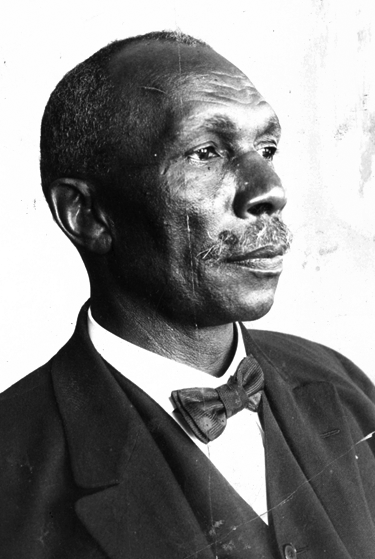
Inman Page (5400, Frederick S. Barde Collection, OHS).
F. D. Moon
Born in 1896, Frederick Douglass Moon had no access to a segregated high school from his home in Lincoln County. He attended the Colored Agricultural and Normal University beginning in ninth grade and until his second year of college. He would go on to earn a bachelor’s and master’s degrees. He began teaching and rapidly gained a reputation as a gifted educator. He worked through professional organizations to advance education for Black Oklahomans and support the fight for civil rights. Moon moved to Oklahoma City in 1940 and served as the principal of Douglass High School for 21 years. He was the first African American president of the Oklahoma City School Board, serving in that role only two years after his election to the school board. He died shortly after, in 1975, in Oklahoma City.
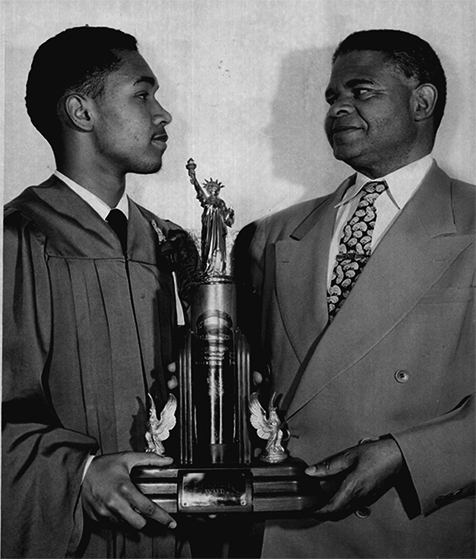
F. D. Moon, right, congratulates James Randolph, a student, 1948 (2012.201.B0405.0039, OPUBCO Collection, OHS).
Zelia N. Breaux
Zelia N. Breaux was born in 1880 to Inman Page and Zelia B. Page. While her father served as president of Lincoln University in Missouri, Breaux earned a bachelor’s degree in music. Inman Page offered his daughter a position on the faculty of the Colored Agricultural Normal University in Langston upon his acceptance of the presidency there. She established the music department there and organized glee clubs, bands, and choral societies in addition to teaching classes and conducting the orchestra.
Breaux left her position at the university to become supervisor of music for the segregated schools in Oklahoma City. She built an unmatched music program, which started with hiring a music teacher for each grade. She also chaired the music department at Douglass High School. She offered the same wide variety of musical activities for students that she began at Langston, and the Douglass High School Band earned national attention.
Outside of school, Breaux managed the Aldridge Theatre. She invited local school artists to perform there while also hosting some of the most popular professional acts in the nation such as Count Basic, Ma Rainey, and Bessie Smith.
kkBreaux’s legacy extended through the impact of her students, which included Charlie Christian, Jimmy Rushing, and Ralph Ellison.
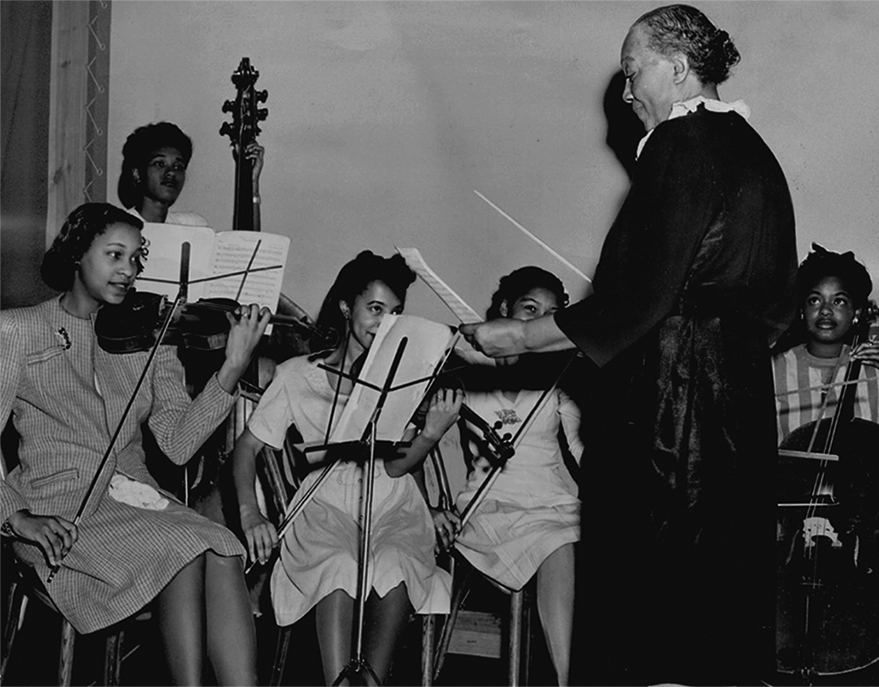
Zelia N. Breaux conducting the Douglass High School orchestra, 1946 (2012.201.B0104.0626, OPUBCO Collection, OHS).
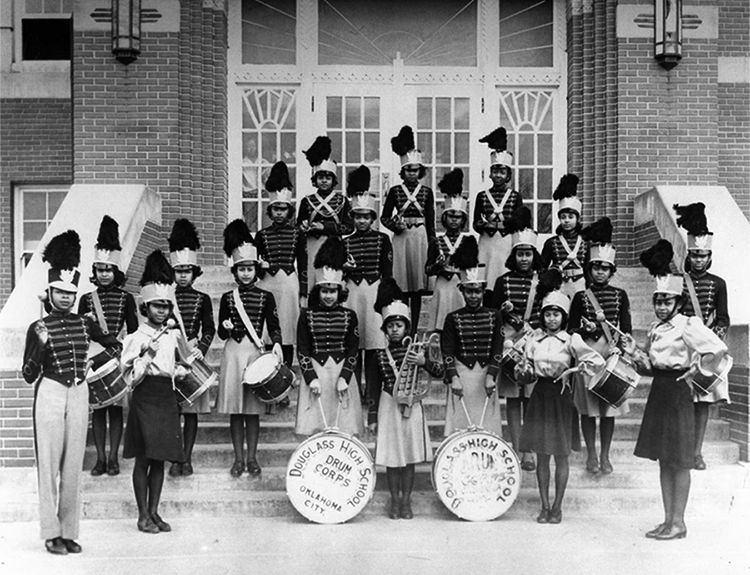
The Douglass High School Band traveled the nation under Breaux’s direction (18428, Elwyn Welch Collection, OHS).
Melvin Tolson
Melvin Tolson was born between 1898 and 1900, and his family traveled the Midwest following his father’s assignments as a Methodist minister. He attended Fisk and Lincoln Universities and graduated with honors. He spent a significant period of his life in Texas, teaching speech and English at Wiley College. His work building a nationally renowned debate team is captured in the film The Great Debaters, with Denzel Washington portraying Tolson. He moved to Langston University in 1947, where he taught English and drama. It was at Langston that Tolson produced his literary works. Considered an important poet in modernism, a style of writing that purposefully rejected traditional ideas and rules of writing, Tolson often used musical structures for his poetry. Many of his poems examined the African American experience and ideas about Africa. He produced three major volumes of poetry and other writings while at Langston. Tolson also served as the mayor of Langston for several terms.
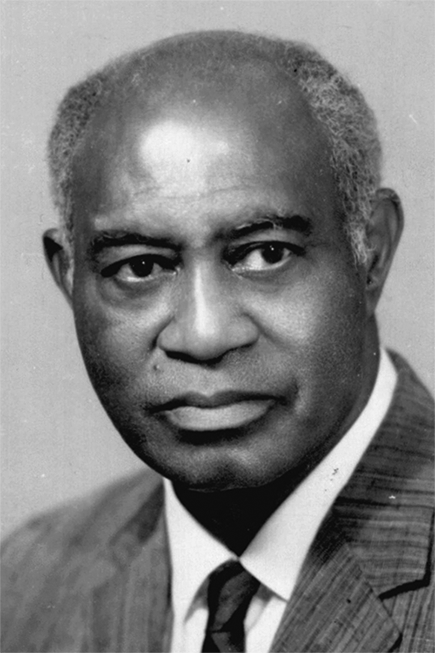
Melvin Tolson built his literary career while teaching at Langston University (2012.201.B1289.1.0263, OPUBCO Collection, OHS).
Judith Ann Carter Horton
Judith Ann Carter was born in Wright City, Missouri, in 1866. She left home to pursue her education, working her way through school, and graduated from Oberlin in 1891. She established the state’s first women’s club for African Americans in 1904, the Excelsior Club. This club would be the beginning of a larger organization of women’s clubs for Black Oklahomans. The club network grew so large, they were able to form the Oklahoma State Federation of Colored Women’s Clubs. Horton served as president of the Federation for three terms, and also worked with the National Association of Colored Women.
In 1907, her husband, D. G. Horton, attempted to use the Carnegie Library in Guthrie and was refused because of his race. In response, Judith Horton led the campaign to build a library for Black residents of Guthrie. She received assistance from her club and the editor of The Guthrie Guide, George Napier Perkins. The Excelsior Library opened in 1908 and remained a centerpiece of the Black community in Guthrie for 40 years. She worked as a librarian at the Excelsior Library without pay for 11 years. Horton accepted a position as a Latin and English teacher, and held this position until her retirement in 1936. She continued to serve the community in various ways until her death in 1948.
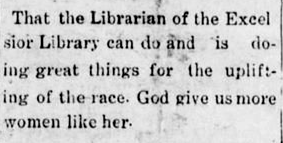
The Oklahoma Guide praised Judith Ann Carter Horton on the front page of its May 16, 1912, issue.

